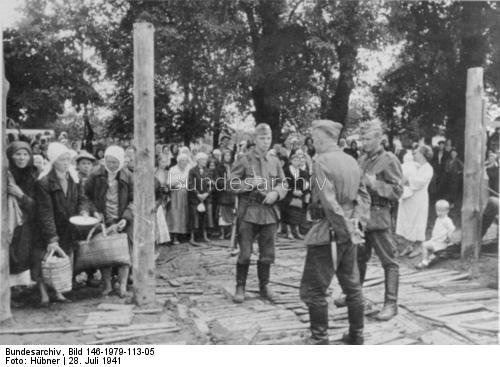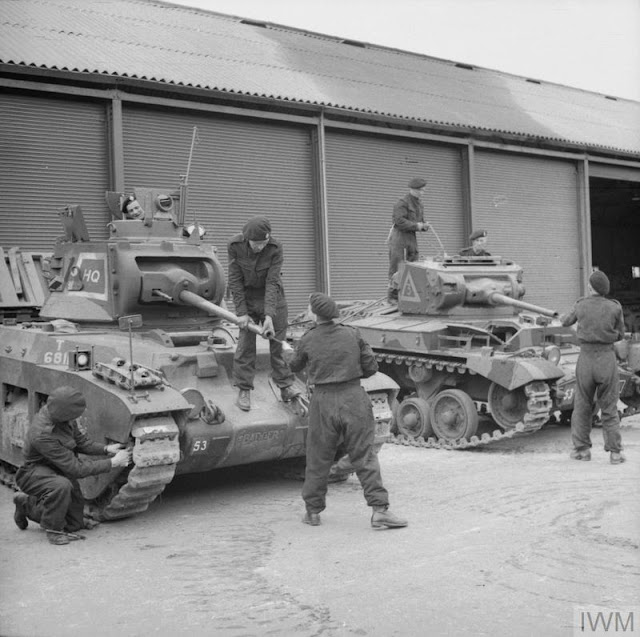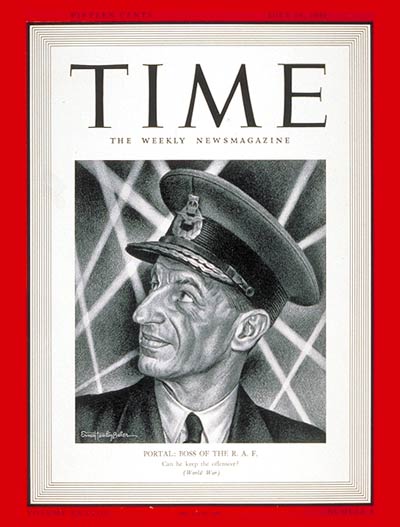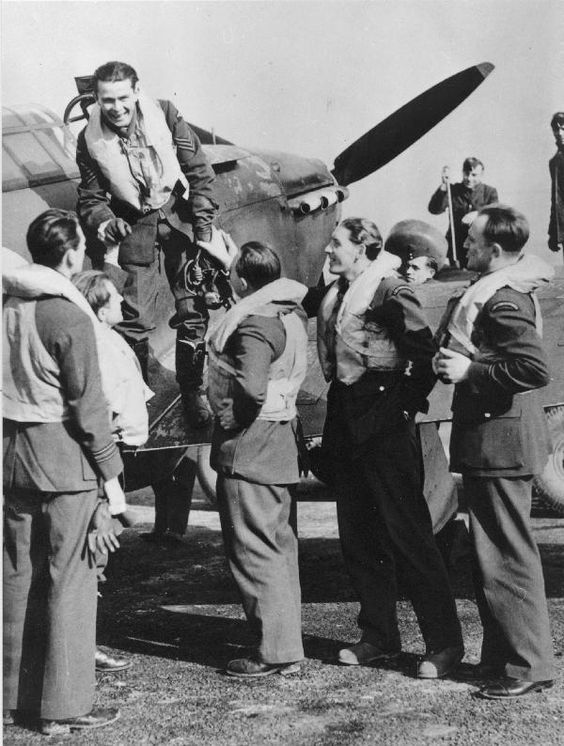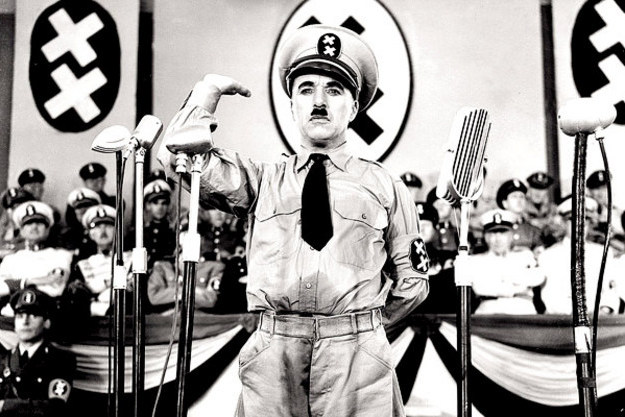Battle of the Mediterranean: In Operation Judgment, the Royal Navy's Mediterranean Fleet, under Admiral Andrew Cunningham, on
11 November 1940 launches 21 Fairey Swordfish biplane torpedo bombers (20 make it to the target) from aircraft carrier HMS Illustrious (R 87). They attack the main southern Italian (Regia Marina) naval base at Taranto. The attack is technically risky because the aerial torpedoes could accidentally hit the shallow (12 meters) bottom when 23 m is considered the minimum necessary - but they don't.
Three battleships at anchor are bombed and torpedoed by RAF No. 815 Squadron beginning at 22:58:
- Conte di Cavour (sunk in very shallow water, 27 killed, 100+ wounded)
- Caio Duilio (beached)
- Littorio (three torpedo strikes, 32 dead, beached))
The British lose two planes. Littorio, the newest ship, is repaired in five months, Caio Duilio in six/seven months, Conte di Cavour is never fully repaired. The Italians also lose two aircraft on the ground and sustain damage to cruiser Trento, destroyer Libeccio (unexploded bombs hit them) and destroyer Pessagno.
The attack alters the balance of naval power in the Mediterranean. However, the change is subtle, and the remaining Italian fleet remains formidable. Two of the battleships sunk are old and likely would have remained in harbor anyway. The newer Littorio, meanwhile, is back in action fairly quickly. The underlying problem with the Regia Marina is not the number of capital ships that it has, but its unwillingness or inability to use them as aggressively as the Royal Navy does.
The attack originally was the idea of Admiral Sir Dudley Pound, the commander of the Mediterranean Fleet in 1938. When Pound handed off to Cunningham in mid-1939, he also bequeathed upon his successor the training and preparation for this attack.
Operation Judgment is just part of the overall Operation MB 8 currently being carried out in the Mediterranean. It involves the supply of Malta, the transfer of ships from Gibraltar to the Mediterranean Fleet, attacks on Italian bases throughout the Mediterranean, and other measures designed to improve the British position in the region. This attack on Taranto, though, is the climax of the larger operation.
The influence of the Taranto attack reverberates around the world. The Imperial Japanese Navy studies the attack closely and uses lessons from it during planning for the later attack on Pearl Harbor. The real effect of the Battle of Taranto, though, is the basic lesson that naval aviation based upon squadrons centered on aircraft carriers can have devastating power. It is a major step beyond the battleships that have dominated naval planning for the past 50 years. The US Navy also benefits from this object lesson in the long run.
 |
| A Fiat CR 42 Falco biplane fighter after crash-landing near Lowestoft, Suffolk on 11 November 1940. The plane was forced down by a propeller malfunction. Courtesy Australian War Memorial ID 005696. |
Italian/Greek Campaign: The Greeks continue pushing the Italians back to the Kalamas River along the coast. Elsewhere, the Italians have taken up defensive positions except at Elea in the Negrades sector, where they make some small tactical gains. In the central Pindos sector, the Greek 1st Infantry Division continues attacking.
The Greeks, meanwhile, are bringing up reinforcements for a counter-offensive without too much hindrance from the Regia Aeronautica. The RAF sends night raids against Italian supply ports at Valona and Durazzo in Albania.
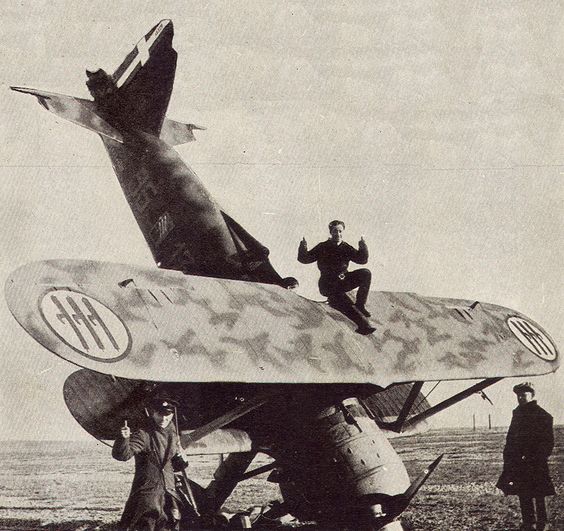 |
| A crashed Fiat CR 42 on the beach at Orfordness, Suffolk. It was with the 95 Squadriglia 18 Gruppo, 56 Stormo. Pilot Sergente Pietro Salvadori becomes his Majesty's guest for the remainder of the war. |
European Air Operations: The Luftwaffe sends fighter-bombers (Jabos) against London in two large waves during the day. Some of the Jabos get through, but the RAF forces most of them to drop their bombs early over random areas. Junkers Ju 87 Stukas also attack shipping off Kent, but have little success; seaplane attacks during the day, though, have great success (described below).
The Italian bomber fleet (Corpo Aereo Italiano, or CAI) based in Belgium sends a dozen Fiat BR 20M bombers and 42 Fiat CR 42 fighters across the Channel toward Harwich at 13:30. Three RAF Hawker Hurricane squadrons (Nos. 17, 46 and 257) shoot down three of the bombers and three fighters, and damaging two other bombers, at no cost of their own and deflect the attack. The Luftwaffe raids London with only about two dozen planes during the night due to poor weather.
Winston Churchill, never a big fan of Italian war prowess, finds the CAI's incompetence amusing, saying later:
[The Italian planes] might have found better employment defending the fleet at Taranto.
RAF Bomber Command attacks Lorient and various Luftwaffe airfields along the coast. The weather over the Continent is judged to be too poor for night attacks.
Top Luftwaffe ace Walter Oesau becomes Gruppenkommandeur of III./JG 3, he is replaced at III,/JG 51 by Hptm. Richard Leppla.
Illustrating how personal the air war can get, leading ace Kommodore Major Werner Mölders of JG 51 gets distraught when a friend, Oblt. Georg Claus with 18 victories, is shot down over the Thames Estuary. He personally goes back and searches for the downed pilot with his wingman, Lt. Eberle, but can't find him.
RAF night fighter No. 650 Squadron shoots down a Junkers Ju 88A bomber by using A.I.IV radar. It is the first kill by the new Beaufighters.
 |
| Fiat BR.20M MM.22267 of 242a Squadriglia on the airfield. This plane was shot down on 11 November 1940. |
Battle of the Atlantic: In Operation Medium, the British battleship HMS Revenge and half a dozen destroyers bombard Cherbourg from 03:33 to 03:51.
It is a big day for aerial attacks on shipping. Aside from the RAF success at Taranto, the Luftwaffe also uses its seaplanes to sink a number of ships. While largely forgotten to the general public, the Heinkel He 115 seaplane was a fearsome Luftwaffe weapon during the war's early years.
The Luftwaffe (Heinkel He 115 seaplanes of KGr 706) attacks convoy EN 23 in the North Sea 7.4 km south of Aberdeen. The convoy is defenseless except for the serendipitous fact that it is passing Convoy WN 34, which has as an escort anti-aircraft ship HMS Alynbank.
The seaplanes torpedo and sink 4327-ton British freighter Trebartha. (The ship's bell is recovered in 1999 and occasionally changes hands). Four crew perish.
The same Luftwaffe attack sinks 3997-ton British freighter Creemuir about 15 miles southeast of Aberdeen. There are 27 deaths. The Creemuir was the lead ship of the port column of the 31-merchant-ship convoy. The torpedo hits amidships and the ship sinks within three minutes. The ship is discovered and dived the wreck in 2009; the divers retrieved the ship's bell and gave it to surviving crew member, Radio Officer Noel Blacklock.
Another ship, British 1141-ton freighter Harlaw in Convoy WN 34, also is damaged in this attack.
Elsewhere, the Luftwaffe (possibly Heinkel He 115 seaplanes of 3,/KGr 906) torpedoes and sinks 3371-ton Norwegian freighter Ravnanger off Redcar, Yorkshire in Tees Bay. There are 26 survivors and one death.
British 2474-ton freighter Corsea is damaged in Barrow Deep off Middlesborough by Heinkel He 115 seaplanes of KGr 506. The Luftwaffe loses two Junkers Ju 88s and a Bf 109 during these attacks.
British freighter Colonel Crompton also is damaged in the same attack off Southend.
British 2345-ton freighter Corduff also is damaged in the same attack off Southend. (This ship was sunk in March 1941; it is a bit unclear what happened to it during this convoy on 11 November 1940, the damage, if any, must have been light).
There are other Luftwaffe attacks which damage 932-ton British freighter Pitwines east of Yarmouth.
British 314-ton trawler Iwate also is damaged by the Luftwaffe five miles southwest of Old Head of Kinsale.
Focke-Wulf Fw 200 Condors also get into the aerial action. A Condor of 1,/KG 40 bombs and sinks 1925-ton British freighter Balmore about 560 km west of Ireland. One of the great strengths of the Condors is their extensive range out over the convoy routes when operating from France. All 27 crew on the Balmore perish.
Royal Navy 417-ton trawler HMT Stella Orion hits a mine and sinks in the Thames Estuary off Herne Bay, Kent. Everyone survives.
British 118-ton coaster Skarv hits a mine and sinks in the Bristol Channel. Five men perish.
British 406-ton coaster Porthcarrack runs aground and is lost near Porthcawl, Glamorgan, off the mouth of Ogmore River, Ogmore-by-Sea. There are four deaths and four survivors. Attempts are made to refloat the vessel, but it is too badly damaged to remain afloat.
Greek 5186-ton freighter Dionyssios Stathatos loses its rudder in the Atlantic west of the Outer Hebrides and is abandoned. Some sources place this loss on 12 December 1940.
Royal Navy destroyer HMS Vega hits a mine off Sunk Head Buoy while escorting Convoy FS 332. It is taken in tow by tug St. Mellons and brought to Harwich for repairs. The ship is badly damaged and takes two full years to return to service.
British 50-ton coaster Grit detonates a mine and is damaged just off Margate Buoy.
British freighter Ardmore sails out of the Port of Cork and then disappears. Some flotsam and jetsam are found, but nobody knows what happened to the ship until much later. Many accounts state that it was sunk by the Luftwaffe. In 1998, the wreck is found in 83 feet of water two miles south of Saltee Islands. It finally is learned that the ship struck a (likely magnetic) mine. As a coincidence, the wreck is near another ship named the Ardmore that sank 23 years earlier, almost to the day, during World War 1. All 24 men on board perish.
 |
| A plaque commemorating the SS Ardmore which relatives of the deceased placed upon the Penrose Quayside of the Michael Collins Bridge, near where the Ardmore departed on 11 November 1940. These daily summaries are full of numbers of people killed and wounded, it is good to recall that we are talking about real people with families and friends whose loss deeply hurt many people. |
British liner Empress of Japan, attacked by the Luftwaffe on the 10th, makes port with light damage. German radio claims to have sunk her.
British corvette HMS Rhododendron spots U-103 and attacks it with depth charges 200 miles northwest of Ireland, but the U-boat escapes undamaged.
Convoy OB 242 departs from Liverpool, Convoy FN 332 departs from Southend, Convoy FS 333 departs from Methil, Convoy HX 85, recalled due to the Admiral Scheer attack, departs from Sydney, Canada.
American minesweeper USS Raven (AM 55) is commissioned.
Battle of the Indian Ocean/Pacific: German raider Atlantis encounters 7528-ton British freighter Automedon about 400 km west of Sumatra around 07:00. The crew of the Automedon has no idea that the Atlantis, disguised as another ship, is a German raider until they are only 5000 meters apart and the crew of the Atlantis runs up its German pennant. The Germans quickly block the Automedon's transmissions so it can radio for help. Because the Automedon does not surrender, the Atlantis opens fire and hits the bridge, killing the captain and many others. There are 6-8 deaths and 12 other casualties, who are taken as prisoners. In all, there are 75 crew, a gunner, and 21 passengers taken prisoner.
The Automedon is carrying 15 bags of Top Secret mail for the British Far East Command, decoding tables, Naval Intelligence reports - all sorts of valuable information. The most valuable information is an envelope addressed to the Commander-in-Chief of the British Far East Command which details the British War Cabinet's detailed evaluation of British assets in the Far East. The captain of the Automedon almost certainly would have thrown this overboard if he hadn't been killed by the Atlantis' first shot. The Atlantis takes off all the useful information and supplies and then scuttles the Automedon at 15:07.
Captain Rogge of the Atlantis gives the captured intelligence to the prize crew which he puts on the captured Ole Jacob. He then sends that ship off to Kobe, Japan. The ship makes it there and delivers the intelligence to the German embassy on 4 December 1940. The ambassador, in turn, gives it to a courier to take to Berlin via the Trans-Siberian Railway. A copy is given to the Japanese.
While all this may seem a bit esoteric and perhaps irrelevant, in fact, the incident is seen by many as playing a huge factor in the Japanese decision to attack the British (and Americans) on 7 December 1941. The material taken shows how weak the British position is in the Far East and how easy it would be to conquer the region.
Wars are full of coincidences, and today two widely separate incidents occur which dramatically influence the events of 7 December 1941: this capture of the Automedon and its secret documents, and the Royal Navy attack on Taranto. In fact, if this decision does influence the Japanese decision to attack it is of far greater importance than the Taranto attack. Demonstrating how important this is, the Japanese bestow upon Captain Rogge an ornate katana (sword) on 27 April 1943, one of only three ever given to a member of the Wehrmacht (the others are given to
Hermann Goering and Erwin Rommel).
 |
| The SS Sinaloa, which ran aground on a reef in Sac Bay off the Garden Peninsula, Michigan, US on Nov. 11, 1940. |
Soviet/German Relations: Soviet Foreign Minister Molotov boards a train to take him to Berlin for his high-stakes meeting with Hitler and Ribbentrop.
Czech/Polish Relations: General Sikorski and Edouard Benes of Czechoslovakia sign an agreement in London calling for post-war union between the two nations. Neither man will be involved in his country's post-war government and the agreement is a nullity.
Italian Military: The Italian Regia Aeronautica forms the first Focke-Wulf 87 Stuka dive-bomber squadron.
US Military: Willys-Overland’s chief engineer Delmar Roos delivers the Quad prototype jeep to the US military at Camp Holabird. The Willys Jeep is a minor modification of the original American Bantam Jeep prototype delivered to Camp Holabird on 21 September 1940. While Willys is credited by almost everyone with designing the Jeep, in fact, it is an American Bantam design subcontracted out to freelance designer Karl Probst. Willys is involved only because the Army, which likes the Bantam design, does not think that Bantam is a big enough company to handle the military's needs. Accordingly, the Army has asked Willy and Ford Motor Company essentially to replicate Bantam's Jeep. Willys, for its part, only gets the fame as the "designer of the Jeep" because, with this delivery, it beats Ford's delivery of its own replica by ten days.
The origin of the name "Jeep," incidentally, is not known with precision. The most likely source is the comic strip Popeye, with its character Eugene the Jeep. Some Army men are heard calling the vehicle Jeep, and the name sticks.
Spain: The Spanish Ministry of the Navy submits a report to Franco indicating that the Germans must capture the Suez Canal before an operation against Gibraltar would be feasible.
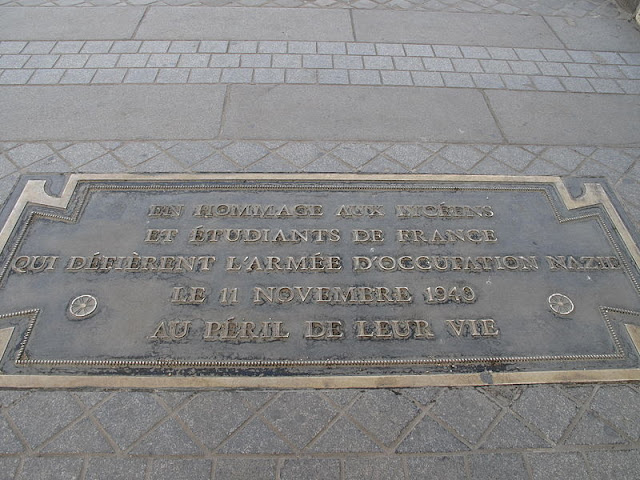 |
| A plaque in the Champs Elysees commemorating the 11 November 1940 protest. This lies near the Tomb of the Unknown Soldier. |
French Homefront: There is an anti-German demonstration in Paris by students on Armistice Day. Many participants are arrested and sent to prison. This is an extremely dangerous thing to do, as a similar protest a year earlier in Prague - on International Student's Day - induced vicious repression by the SS.
American Homeland: The Armistice Day Blizzard strikes.
Freighter William B. Davock, 4468 tons, is caught in the blizzard on Lake Michigan and sinks. All 32-33 crewmen aboard perish. A 2014/15 investigation by the Michigan Shipwreck Research Association finds that the cause of the wreck was a broken rudder that jammed against the propeller, stripping it and rendering the ship helpless in the face of the wind and sea.
Several other vessels also are damaged or run aground, for a total of about 59 deaths. Two ships go down very near each other. Canadian 2227 ton freighter Novadoc runs aground near Pentwater, Michigan and is lost, with all crew saved 36 hours later when a tugboat, the Three Brothers II, goes out and rigs a breeches buoy to the freighter. Canadian 4285 ton lumber freighter Anna C. Minch breaks in two during the storm about one and a half miles south of Pentwood. All 24 crew perish.
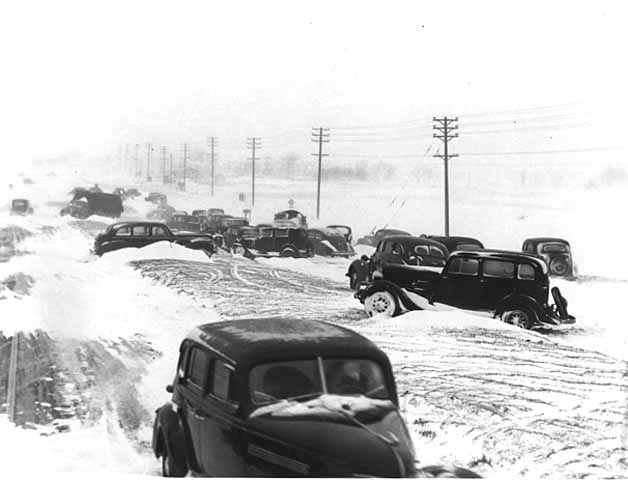 |
| The Armistice Day Blizzard leaves classic cars stranded everywhere. |
November 1940 November 1, 1940: Hitler IrateNovember 2, 1940: U-31 Sunk - AgainNovember 3, 1940: Kretschmer's Master ClassNovember 4, 1940: Spain Absorbs TangierNovember 5, 1940: Jervis Bay Meets Admiral ScheerNovember 6, 1940: San Demetrio IncidentNovember 7, 1940: Galloping GertieNovember 8, 1940: Italian Shakeup in GreeceNovember 9, 1940: Dutch Fascists MarchNovember 10, 1940: Fala and Doc StrangeNovember 11, 1940: Taranto RaidNovember 12, 1940: Molotov Takes BerlinNovember 13, 1940: Molotov Foils HitlerNovember 14, 1940: Moonlight SonataNovember 15, 1940: Warsaw Ghetto SealedNovember 16, 1940: France Keeps BattleshipsNovember 17, 1940: Malta Hurricane DisasterNovember 18, 1940: Hitler Berates CianoNovember 19, 1940: Birmingham DevastatedNovember 20, 1940: Hungary Joins AxisNovember 21, 1940: Dies White PaperNovember 22, 1940: Italians Take KorçëNovember 23, 1940: U-Boat Bonanza!November 24, 1940: Slovakia Joins InNovember 25, 1940: Molotov's DemandsNovember 26, 1940: Bananas Be GoneNovember 27, 1940: Cape Spartivento BattleNovember 28, 1940: Wick PerishesNovember 29, 1940: Trouble in IndochinaNovember 30, 1940: Lucy and Desi Marry2020









